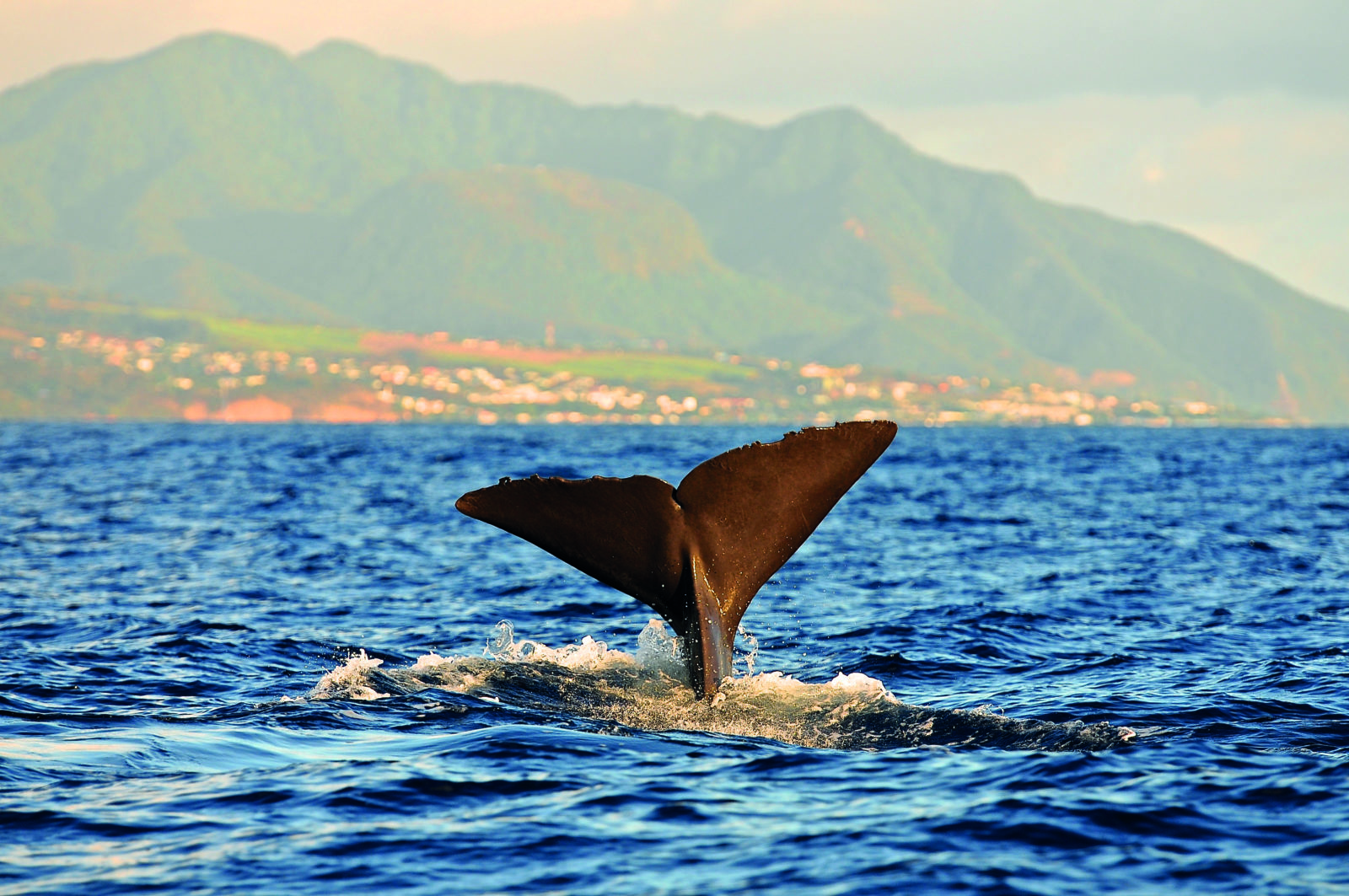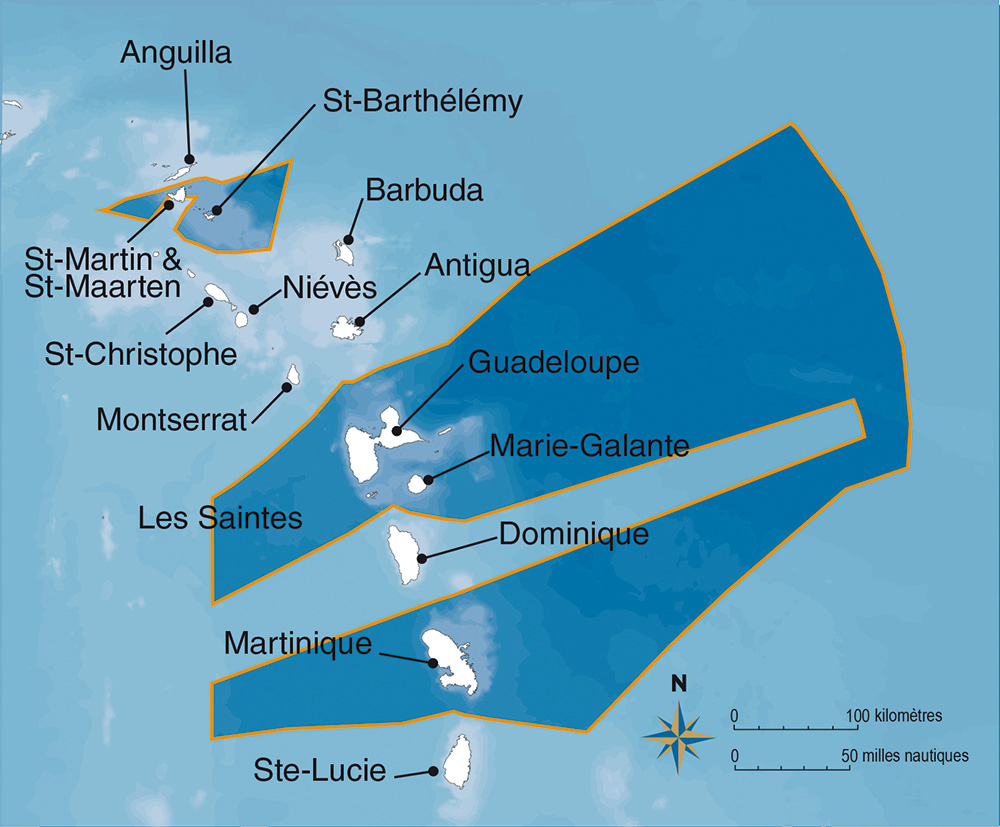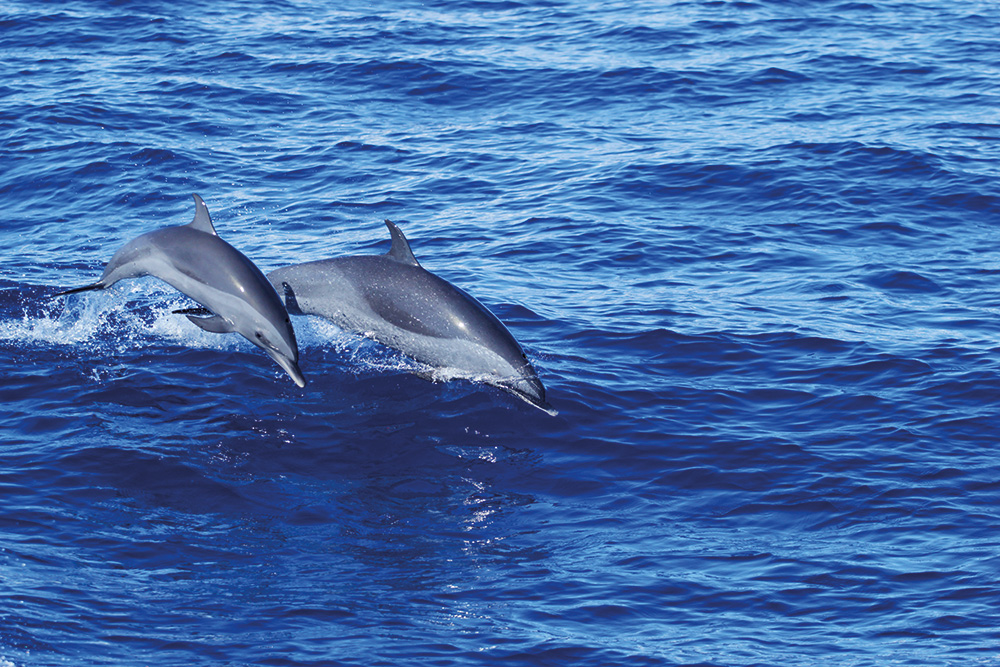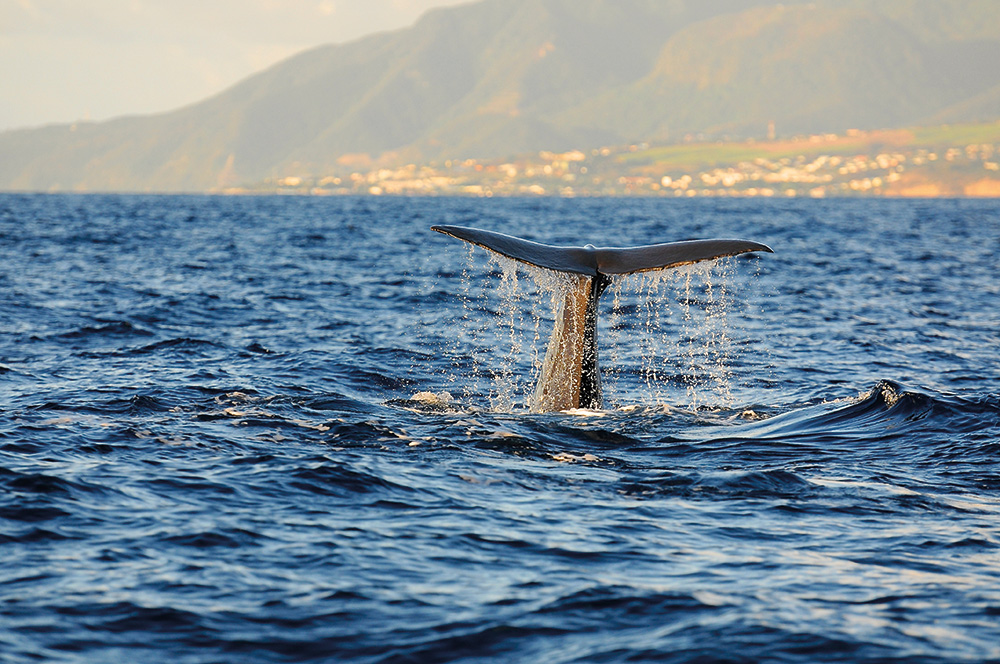
In 2010, The Agoa Sanctuary became the second largest protected marine park in French waters, covering Martinique, the Guadeloupe archipelago, Saint Barthélemy, and Saint Martin.
143,256 square kilometers: that is the perimeter of the Agoa Sanctuary for marine mammals in the French West Indies. Its goal: guarantee a protected habitat for these exceptional animals. To carry out its objectives, Agoa collaborates with various environmental agencies within the French Antilles EEZ (exclusive economic zone), as well as on an international level, as indicated by Laurie Hec, director of the Sanctuary: “Marine mammals do not know about man-made frontiers; the activities of the Agoa Sanctuary must also have an international dimension, which is why it is important to cooperate with neighboring counties within the Caribbean region.”

AGAINST GLOBAL WARMING ~ Keystones of the under-water environment, marine mammals are often referred to as an “umbrella species:” this means that by protecting these unreplaceable animals, we are protecting an entire ecosystem essential for life to exist on earth. They are major weapons against global warming, primarily due to their close connection to phytoplankton (considered the biggest carbon sink and producer of oxygen in the world). We also know that the largest whales capture as much as 33 tons of CO2 during their lifetime; a stockpile that they carry to the bottom of the ocean when they die. And finally, from an economic point of view, marine mammals are guardians of the health of coastal ecosystems and by consequence tourism and fishing on our islands.

SPREADING KNOWLEDGE ~ We know that close to a third of the known cetaceans on the globe are present in the waters of the Caribbean. The knowledge and study of these species has already allowed us to define the threats that endanger them, invariably due to human activity: various kinds of pollution; bad methods of observation at sea; fishing; hunting; and climate change. These are among the many challenges that the Agoa Sanctuary faces in terms of protecting marine mammals and their habitat. Issues that are spelled out on the Sanctuary’s official website, with hopes of increasing information and public awareness: Spreading knowledge, which is one of the pillars of Agoa’s activities with the intent to limit negative interactions between mankind and marine mammals, in parallel to the regulation of activities that are harmful to these animals.
Among such activities, whale watching, or observing them in their natural habitat, is a popular eco-tourism activity in the Caribbean. Professionally practiced, whale watching can increase public awareness, but on the other hand, can adversely prove to be a physical infringement on the cetacean population when not handled correctly. As a result, whale watching is one of the primary issues of concern within the waters of the Agoa Sanctuary.

Autor : Olivier Aussedat

